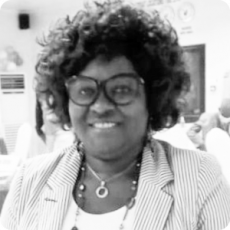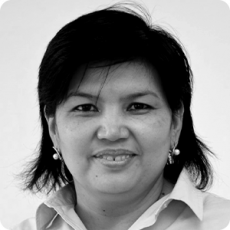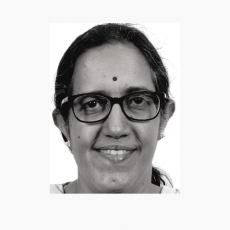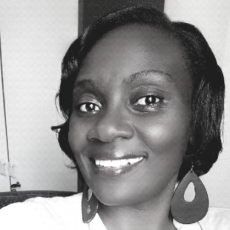On October 15th, the world marks the International Day of Rural Women. The United Nations has dedicated this day to the millions of women living in rural areas, contributing towards rural development and agriculture. The aim of this yearly celebration is to highlight the essential role that rural women and girls play in achieving the Sustainable Development Goals which are expected to put an end to poverty and make the world a better place by 2030.
Yet, this noble ideal is blurred by the challenges and barriers faced by women living outside big urban areas. In today’s article in our Expert Opinion series, we asked several experts to share their insights into the conditions for rural women and girls in Cameroon, Chad, and other poor and developing countries, the challenges they face, and the measures needed to be taken by the international community in order to accelerate their empowerment.
Key Takeaways:
- Weak land governance and administration, such as land ownership registration, land tenure systems, and limited access to finance, markets and connectivity, limit rural women’s potential to thrive
- Donors should insist that implementing partners factor rural women’s inclusiveness into every development program;
- According to the UN, rural women spend more time than urban women and men in reproductive and household work, including time spent obtaining water and fuel, caring for children and the sick, and processing food.
- Giving women the same access as men to agricultural resources and inputs could increase production on women’s farms by 20-30%, reducing the number of hungry people in the world by 100-150 million.
- International experts believe that women play key roles in agricultural production, transportation, processing, and marketing – roles that are highly important in meeting Sustainable Development Goals, particularly goals 1 and 2 (poverty reduction and zero hunger, respectively).
What are the biggest challenges faced by rural women today?

“Most rural women in developing countries depend on agriculture for survival. Although involved in all value chains of the agrifood systems, women represent the highest percentage of the resource-poor population. Access to land in many parts of rural Africa is still by the unregulated customary law of inheritance, which tactically and practically eliminates women from possessing land. Rural women are highly vulnerable to climate change due to their small farm sizes, lack of funds/credit, and poor access to markets. In cases where there is external support from development agencies to mitigate the effects of climate change, they are overlooked because the focus is usually on the head of the household – that is a man. Women spend hours trekking in search of water, and when available within the village, many productive hours are wasted queuing.”

“From my experience, most people who continue to live in poverty are people in remote rural areas. Those are predominantly women who maintain their livelihoods, well-being and resilience through primary agricultural activities and via unregistered businesses. Rural women also face marginalization in decision-making, weak or unprotected land tenure rights, a lack of information and knowledge of available opportunities, access to land, firewood and water, illiteracy and innumeracy, a lack of access to technology and advanced education, gender-based violence and a lack of access to health and psychosocial services. Let’s take, for instance, access to land – land in rural areas is the source of almost everything that makes holistic humans feel alive. Elements like the sense of pride that they own a piece of land, a sense of belonging to a community, shared values, customs, and traditions, and then primary and secondary economic activities create the foundation of rural living. Therefore, most women remain in rural areas to work the land while caring for their families and reproductive needs. Suppose the rights of land access or ownership are unequal between men and women. In that case, rural women risk losing access and control over land, often the only foundational and fundamental asset they have to secure their livelihoods. Weak land governance and administration, such as land ownership registration, land tenure systems, and inclusive access to finance, market and connectivity (energy and technology), limit rural women’s potential to thrive.”

“Rural women perform many more reproductive and productive tasks than is generally acknowledged or explicitly valued by the family and communities. Time and cultural constraints generally leave little room for women to strive for achievements and success outside the home, develop their careers and relations in the community. The traditional pressure to restrict women to their household role and activities, added to the common perception that women’s contributions to productive labor are secondary, prevent women from actively engaging in economic initiatives, especially in rural areas.”

“Rural women engage largely in agriculture and allied activities. The lack of title to land and/or ownership of other productive assets is one of the biggest challenges faced by them. Closely linked to this is the lack of access to credit and other financial resources, inputs and market. Disparity in wages is another challenge. A farmer is traditionally seen to be ‘male’, in spite of women playing a significant productive role in agriculture.”

Rural women are constructs of development, however are challenged by several impeding aspects surrounding their; gender composition, gender roles, societal believes, cultural constraints and access to key basic services such as education, among others. Majority of rural societies are male dominant due to the cultural norms that have set barriers for women’s active participation in economic opportunities. For example, in Agriculture; women don’t own land hence they can’t make decisions over the land and neither can they access formal financing services due to the requirement of collateral security.

“Rural women in Cameroon face several challenges. I would mention the weak economic empowerment: women are poorer than men because they spend most of their time doing domestic work, taking care of children and the elderly. Limited access to land prevents women from investing in perennial crops. In some countries or regions, they do not inherit land. Society tolerates women to grow only food crops; rural women have very little access to health care and sometimes must travel miles to reach a health center. That’s why they usually return to traditional pharmacopoeia. Illiteracy is a scourge that prevents women from improving their socio-economic conditions and the future of their children.”

“The condition of women in Chad, as everywhere else in Africa, remains very worrying both for themselves and for society as a whole because of their vulnerability. In Chad, on the path to empowerment, women are held back by discriminatory traditions and gender stereotypes. Yet investing in women’s economic empowerment is the surest path to gender equality, poverty eradication and inclusive economic growth. The role of rural women has always been reduced to the premises of the household, contributing to strong dependence on the husband. We need a firm policy that guarantees women access to resources but also a favorable social environment. Chadian women must evolve together in association for their empowerment and the achievement of parity.”
What is the role of rural women in advancing the sustainable development goals?

“Women make significant contributions every day to reproductive, production, and community work, from bringing an income to their household to creating job opportunities, and taking care of the family and the elders. The important roles of women in the agricultural value chain cannot be overemphasized. These roles are highly important in meeting Sustainable Development Goals, particularly goals 1 and 2 (poverty reduction and zero hunger, respectively). Women offer the bulk of the family and hired labour for harvesting and transportation of agricultural produce from farms to the village/market. Most importantly, they handle the bulk of the processing and marketing of the households’ production. These contributions are highly essential to improving agricultural productivity and increasing households’ income thus leading to a reduction in poverty, hunger, and food insecurity.”

“I think the role of women in advancing the sustainable development goals is to fully comprehend the targets of the goals so that they can find and take up their space to ensure that the goals respond adequately to their plights. For instance, advocating for achieving SDG Goal 5 (Achieve gender equality and empower all women and girls) would enable improved tenure security for rural women farmers through the implementation of gender-responsive land tenure reform policies and rural finance Economic opportunities for marginalized rural women and girls would greatly expand through agri-business and off-farm entrepreneurial opportunities. Their empowerment will contribute towards improving access to financial services such as credit facilities, inheriting property and having access to natural resources.”

“I think the role of rural women in advancing the sustainable development goals is enormous but still underestimated. Women in rural areas are currently little recognized as economic agents contributing to household income. Their role in this regard is limited due to cultural, traditional and religious norms. Working women are to some extent increasingly stigmatized and any kind of female labour (productive and reproductive) is generally little valued.”

Rural women are a key anchor in advancing SDGs. For example, for SDG 2 and 3; rural women participate in household dietary preparations in a household. However, they are challenged to make appropriate decisions due to lack of access to productive resources. ie they don’t make decisions over what should be grown on land or utilization of proceeds from agriculture. In most agricultural value chains in Uganda (my country), decisions on proceeds of agriculture are made by the man. Women participate in growing commercial crops owned by the man, while unproductive margins of land are left to them for growing other food crops. The land left to women being unproductive will limit what type of nutritious food she can grow for her household.

“Women play multiple roles in achieving the Sustainable Development Goals. For SDG 1, they are mainly active in the informal sector and in food crop production, the small processing and marketing of food. The resources generated are used to acquire consumer goods and send children to school in accordance with SDG 4. Unfortunately, their economic power is low and they find it difficult to send their children to school. Concerning gender equality, SDG 5, rural women are increasingly claiming their rights. They are helped in this regard by their sisters in urban areas who are organized into NGOs and associations for the defence of women’s rights. Progress is small, but nevertheless present: several women have launched into the development of cash crop sectors such as cocoa, coffee and palm oil which have not been monopolized by men.”
How should the international community empower rural women?

“The international community can contribute immensely to rural women’s empowerment by making the rural development agendas gender friendly. Donors should deliberately factor in rural women’s inclusiveness in all development programs/projects. Gender-responsive policies should be mainstreamed into the local institutions and national and regional development plans. Targeted interventions for women should be prioritized through customized investment in high-impact areas. The main areas along the agricultural value chain (production, processing, marketing) where rural women are active need to be targeted for rural women’s empowerment programs. Rural women in climate change-prone areas need to be deliberately targeted for support that can help them to mitigate the negative effects of climate change.”

“I would argue that governments are the first stakeholders in line to empower rural women and they can do so through knowledge exchange programs to improve and transform them economically and socially and promote gender equality and inclusiveness. Innovation, new partnerships, knowledge sharing, the scaling up and replication of well-proven approaches to development should improve rural women’s challenges. Providing support in the formulation of evidence-based reform policies that are gender-sensitive should be prioritized. Introducing innovative and functional systems of land governance, administration, and management, sharing experiences from and promoting knowledge exchange amongst countries that have gone through similar challenges of poor women’s participation in rural development can strengthen structures like South-South Triangular Cooperation.”

“I think that the international community could use a twin-track approach to women’s empowerment: one is concerned with the strengthened participation of women in the different economic activities, the second with specific activities for gender equity – a women and youth business development sub-component. The main role and task of the international community is to work and promote equal rights for women and men, and prohibit all discrimination on the grounds of gender, ethnic origin or religious belief, and all other distinguishing social characteristics. That is a difficult task but by all joining efforts, we could progress well.”

“Guaranteeing the right to access productive resources can make a big difference in the empowerment of rural women. Addressing the male-female wage disparity is another area. While laws may be in place, it is necessary that women are made aware of their rights and empowered through collectivization, literacy and other means, to demand/access their entitlements. The sensitization of rural men, to see the women as partners and not weak dependents, is also needed.”

The International community should continue advocating for women empowerment and development that supports a gender centered structural and systematic integration of women at all levels in a country. Such as; Access to knowledge through education of the girl child and all related supported required to keep the girl child in school, implementation of gender strategies designed by different governments (we know that several governments have designed gender strategies however these are shelved somewhere), seeing that Agriculture employs majority of women in rural communities there should be affirmative action to address participation of women in more profitable agricultural economic opportunities.
Check out more than 100 job opportunities in the Gender sector here.

